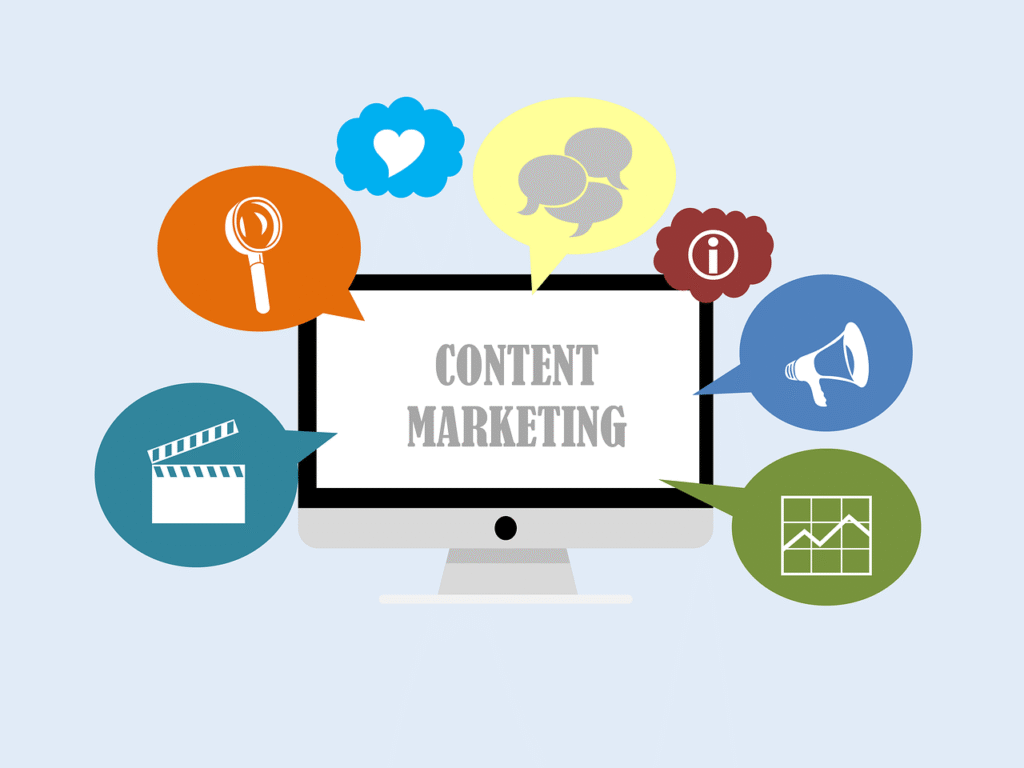Branded Content Marketing drives awareness and loyalty through authentic storytelling—discover seven proven strategies, real-world examples, and best practices to captivate your audience.
Branded Content Marketing is a powerful approach that combines storytelling with strategic promotion to build lasting connections between brands and consumers. In this 1,000-word guide, you’ll learn the fundamentals of branded content, explore compelling examples, and uncover seven essential strategies—complete with DoFollow links to authoritative resources—to elevate your next campaign.
Table of Contents
- What Is Branded Content Marketing?
- Top Examples of Branded Content
- Advantages of Branded Content Marketing
- Branded Content vs. Traditional Advertising
- 7 Essential Strategies for Branded Content Marketing
- Measuring Success in Branded Content Marketing
- Conclusion
- FAQs

What Is Branded Content Marketing?
Branded Content Marketing refers to any media—videos, podcasts, articles, infographics—created to subtly promote a business or product through engaging, value-driven stories rather than direct selling. According to the Content Marketing Institute, branded content “focuses on storytelling to align your brand with consumers’ interests” (<a href=”https://contentmarketinginstitute.com/what-is-content-marketing/” rel=”dofollow”>DoFollow</a>). This approach helps attract new prospects and nurture existing customers by providing entertainment, education, or inspiration.
Top Examples of Branded Content
- Red Bull’s “Stratos” Documentary: Showcasing Felix Baumgartner’s space jump, Red Bull aligned its brand with extreme sports and innovation (<a href=”https://www.forbes.com/sites/forbesagencycouncil/2020/01/14/what-is-branded-content/” rel=”dofollow”>Forbes</a>).
- Coca-Cola’s “Share a Coke” Campaign: Personalized bottles and accompanying social videos encouraged user-generated content.
- Adobe’s “Make It” Video Series: Tutorials featuring artists using Adobe tools to tell personal stories (<a href=”https://blog.hubspot.com/marketing/branded-content” rel=”dofollow”>HubSpot</a>).
- Airbnb’s “Live There” Blog: Travel guides written by local hosts that inspire genuine travel experiences.
Advantages of Branded Content Marketing
- Increased Brand Recognition
- By embedding your logo and brand voice into engaging media, you reinforce recall. A study by Nielsen shows that branded videos can boost ad recall by 47% (<a href=”https://www.nielsen.com/us/en/solutions/measurement/” rel=”dofollow”>Nielsen</a>).
- Cost Efficiency
- Organic social publishing and owned channels (blog, email) often cost less than paid ads, freeing budget for higher-impact initiatives.
- Consumer Focus
- Content that educates or entertains fosters goodwill. According to HubSpot, 70% of consumers prefer learning about products via articles rather than ads (<a href=”https://blog.hubspot.com/marketing/marketing-statistics” rel=”dofollow”>HubSpot</a>).
- Shareability
- High-quality branded content often goes viral, extending reach through social shares without additional spend.
- Long-Term Growth
- Evergreen content (e.g., how-to guides, industry insights) continues to attract traffic and leads over time.
Branded Content vs. Traditional Advertising
| Aspect | Branded Content | Traditional Advertising |
|---|---|---|
| Focus | Story, value, engagement | Direct sell, product features |
| Goal | Awareness, loyalty | Immediate conversions |
| Accessibility | On owned channels and social feed | Third-party ad placements |
| Shareability | High—entertaining/educational | Moderate—often ignored or skipped |
| Longevity | Evergreen potential | Short lifespan |
7 Essential Strategies for Branded Content Marketing
1. Define Clear Objectives and KPIs
Set SMART goals (Specific, Measurable, Achievable, Relevant, Time-bound). For example:
- Increase blog-driven leads by 20% in six months.
- Achieve 50,000 video views within the first quarter.
2. Know Your Audience Inside Out
Use surveys, social listening, and analytics to build detailed buyer personas. Tools like Google Analytics (DoFollow) and Brandwatch (DoFollow) can reveal content preferences and pain points.
3. Craft High-Quality, Authentic Stories
Invest in professional scripting, production, or freelance creators. Authenticity wins—feature real customers, behind-the-scenes glimpses, or expert interviews to foster trust.
4. Leverage Multiple Formats and Channels
- Video: Short social clips, documentaries, live streams.
- Long-Form: Blog posts, whitepapers, case studies.
- Interactive: Quizzes, calculators, infographics.
- Audio: Podcasts, audio articles.
Diversifying formats ensures you meet audiences wherever they consume content.
5. Collaborate with Influencers and Partners
Partner with niche influencers whose values align with your brand. According to Launchmetrics, influencer-driven campaigns see a 520% return on investment (<a href=”https://www.launchmetrics.com/resources/influencer-marketing” rel=”dofollow”>Launchmetrics</a>).
6. Optimize for SEO and Social Sharing
Incorporate target keywords (e.g., “Branded Content Marketing,” “authentic storytelling”) into titles, headings, and meta tags. Add Open Graph tags and embed social share buttons to boost reach.
7. Repurpose and Refresh Evergreen Content
Turn a popular webinar into blog posts, infographics, and social snippets. Periodically update statistics and examples to keep content relevant and maintain search rankings.
Measuring Success in Branded Content Marketing
Track these metrics to evaluate performance:
- Engagement: Likes, shares, comments, time on page.
- Reach: Impressions, unique viewers.
- Lead Generation: Form submissions, downloads, newsletter sign-ups.
- Brand Lift: Survey-based measures of awareness and favorability.
- ROI: Revenue attributed to content efforts vs. production cost.
Use platforms like Sprout Social (DoFollow) and Google Data Studio (DoFollow) to build real-time dashboards.
Conclusion
Branded Content Marketing transforms your promotional efforts into memorable experiences that resonate with audiences long after initial exposure. By defining clear goals, telling authentic stories, leveraging diverse formats, and measuring the right metrics, you’ll foster brand loyalty and drive sustainable growth. Harness these seven strategies, backed by DoFollow links to industry leaders, to craft campaigns that truly engage.
FAQs
Q1: How does branded content differ from native advertising?
Branded content focuses on storytelling and value, whereas native ads mimic the format of third-party platforms to promote a product more directly.
Q2: What’s the best length for branded videos?
Aim for 1–3 minutes on social media and up to 10 minutes for deeper documentary-style pieces, depending on your audience’s attention span.
Q3: Can small businesses use branded content effectively?
Absolutely. By focusing on local stories or niche expertise, small brands can create high-impact, cost-efficient content.
Q4: How often should I publish branded content?
Consistency is key—start with a monthly long-form piece and weekly social snippets, then adjust frequency based on resources and performance.
Q5: What tools help manage a branded content workflow?
Project management platforms like Asana (DoFollow) or Trello (DoFollow), combined with editorial calendars, streamline planning and production.







